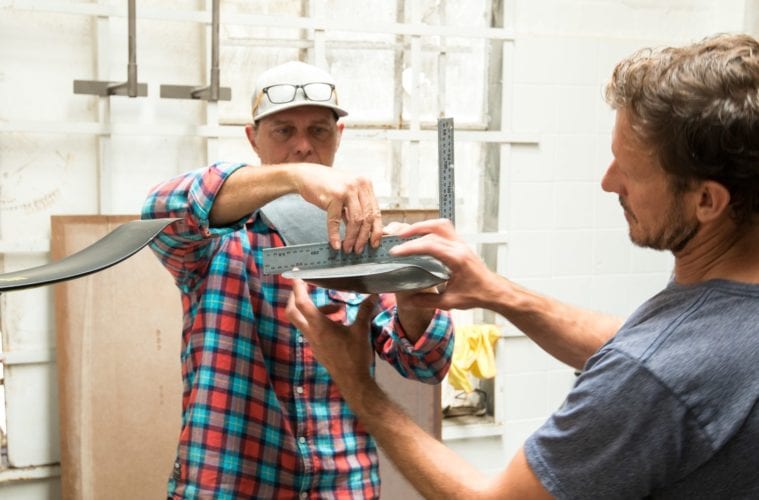The new Airush Core Foil Range enters into the market as a premium freeride focused and versatile offering from easy to use entry level products to more performance oriented options by using a modular system. Building on incredibly positive feedback on the 2017 range, Airush have redesigned key details to increase the high-end freeride performance without sacrificing ease of use. Airush Kiteboarding sits down with the Foil design and test team, Clinton Filen, Moorrees “Mouse” Van Rensburg, and Julien Kerneur to go behind the design of the new Airush Core Foilboards and Foils.
The new Core Foil Board range has been a big update from the current board offering. What was the idea of providing 3 different boards?
CF ”“ There is such a constant evolution in foiling, along with riding styles. We wanted to offer a freeride range that appealed to the absolute beginner or heavyweight with the largest size. Julien also wanted to appeal to the advanced freerider more focused on carving or rider wanting portability. This led to the development of the Mini Foil board. So the Core Foilboards really cover a broad range of users.
Besides the Core Foilboard range, with the Mini Monster Convert we have also developed a very good foil attachment system that minimized any drag or weight when not using the foil. This board evolved from one of our best small wave shapes (the Cypher).
We also developed a pure race shape with Julien, aimed at the performance competition market, this board will be available in the spring.
How are the new Core Foil Boards similar or different than the V1 model?
JK ”“ The new Core Foil Boards are an evolution of the V1 with a focus on better comfort while keeping the ease of use that it is well known for. The idea was to keep the width for the first time foilers, with a more narrow board option for advanced riders looking for a board they can edge and lean against for better upwind ability. The concept was taken from the Team Foilboard in a freeride format, still nowhere near as narrow as the full-on raceboards.
That’s why we offer 2 different sizes. The Core in a 51cm width is quite close to the Core Foilboard V1 with a fuller nose for increased stability, whereas the added Core Foil 47cm model is for the most advanced freeriders.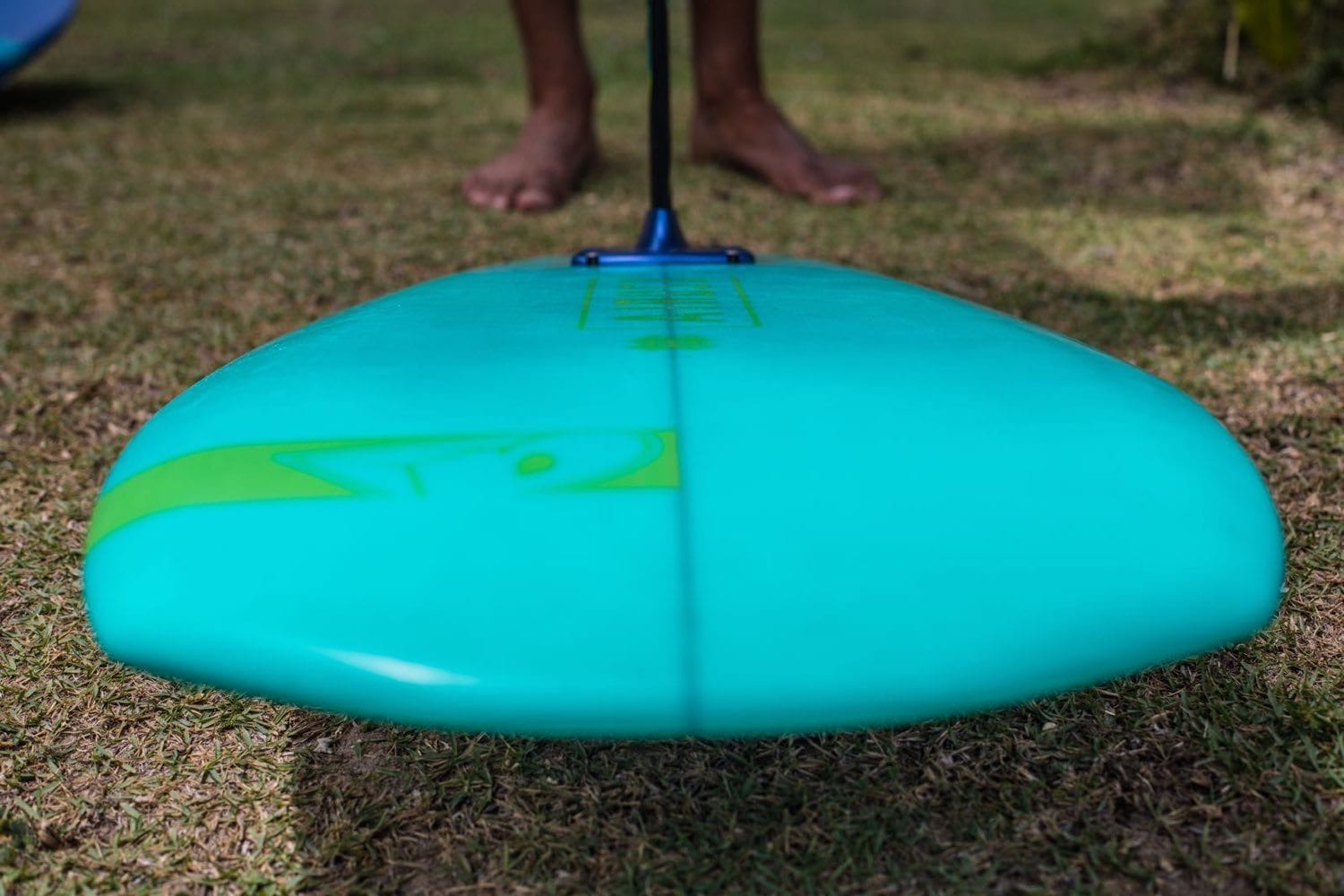 The Mini Foil (120×46) style is becoming quite a popular for a lot of riders. When is someone ready for this board and how should the trim their Core Foil to maximize this boards performance?
The Mini Foil (120×46) style is becoming quite a popular for a lot of riders. When is someone ready for this board and how should the trim their Core Foil to maximize this boards performance?
JK ”“ The Mini Core Foil is one of the most fun boards to ride, it’s extremely skatey and portable. Anyone can ride this board, maybe not for the first foilers but an intermediate level is really all you need. I recommend using the straps at first to get used to the size and the fact that it is a lot shorter than your conventional board and then removing these straps as you progress. The trim on the foil is identical to the larger board trim settings.
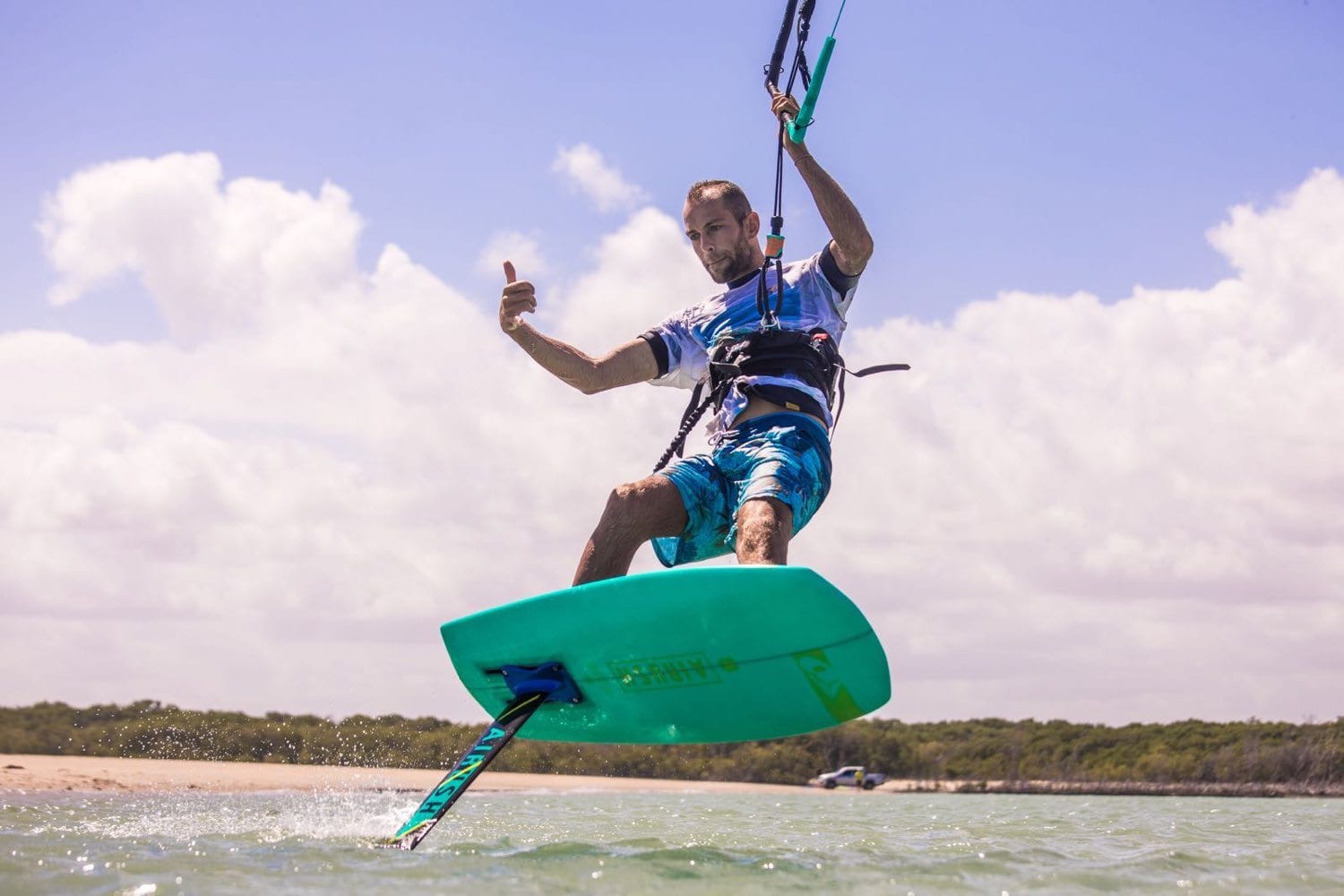
The Mini Monster range is becoming a big favorite. Whose idea was this and what is the vision of the Mini Monster in the convertible offering?
CF- We work collectively on our products and even if there is a designated designer for a product, there are enough wild ideas flying around at any given time that it would be hard to frame any single person and what exactly they contributed.
The idea behind the Mini Monster Convert is a convertible board that can be used from flat water to small surf as a standard board or you can attach the foil. It is the best board for a traveler who wants to ride in as many conditions as possible.
The unique connection system has minimal drag when not in use, so when you are not using the foil, the board still functions very well as a normal planing hull.
What are the biggest challenges in designing a foil?
CF ”“ From my side, the biggest challenge is really understanding how people want to ride in the future. A lot of people are riding very slowly with big wings and short masts and then there are a big group of freeriders traveling at twice the speed and just blasting. This is before you even consider the possibility of crossover products between other sports, racing products and every other scenario. These are exciting times.
MVR ”“ The first focus for most of the top-end foil designs had been speed. These foils were all notoriously hard to learn on but had a good following with early adopters who spent their time learning the basic to advanced techniques.
Ease of use was harder to design into foil setups without a big performance compromise.
The production Airush Core Foil V1 set was built like a freeride setup but had the speed and handling of a full race setup, so, the focus was on improving the handling in the entry-level range of use. This was the biggest challenge.
This challenge is not unique to the foil world. Many emerging performance technologies struggle to find this balance and it’s often a result of years of development.
Between four mast and two wing options, there looks to be a lot of customization. What is the idea behind the multiple mast and wing offerings?
JK ”“ We have a lot of options for mast and wing combinations and customization.
The 40cm mast + 1000 wing is more school beginner oriented. 40cm is for the few first rides to understand how the foil works and how to balance and maneuver a foil before using a longer mast.
The 60cm mast + 1000 wing is generally ideal for beginners who want to ride and progress. It has a good combination of mast height and stability. We also see a lot of shallow water riders using this fun set up!
The 80cm mast is the most popular set up with the 1000 wing and 580 wing. I would recommend using the stock 580 wing for the best combination of lightwind riding and speed. The 1000 wing is more carving and wave oriented whereas the 580 more cruising with high-speed stability.
The 95cm mast is perfect for the 580 wing for high speed, cruising, and free-racing.
MVR ”“ At the current state of development, certain design parameters give certain handling and performance characteristics. It is now possible to customize your Airush Core setup to suit your riding needs or expand the range of use you already have.
Shorter masts will give you easier learning with more stability. Longer masts allow more clearance in bigger chop and swell and also bigger leaning angles for higher powered riding.
Smaller wings come into their own at high speeds and with a higher skill set. Bigger wings allow you to get flying earlier and learn your transitions at lower, safer board speeds.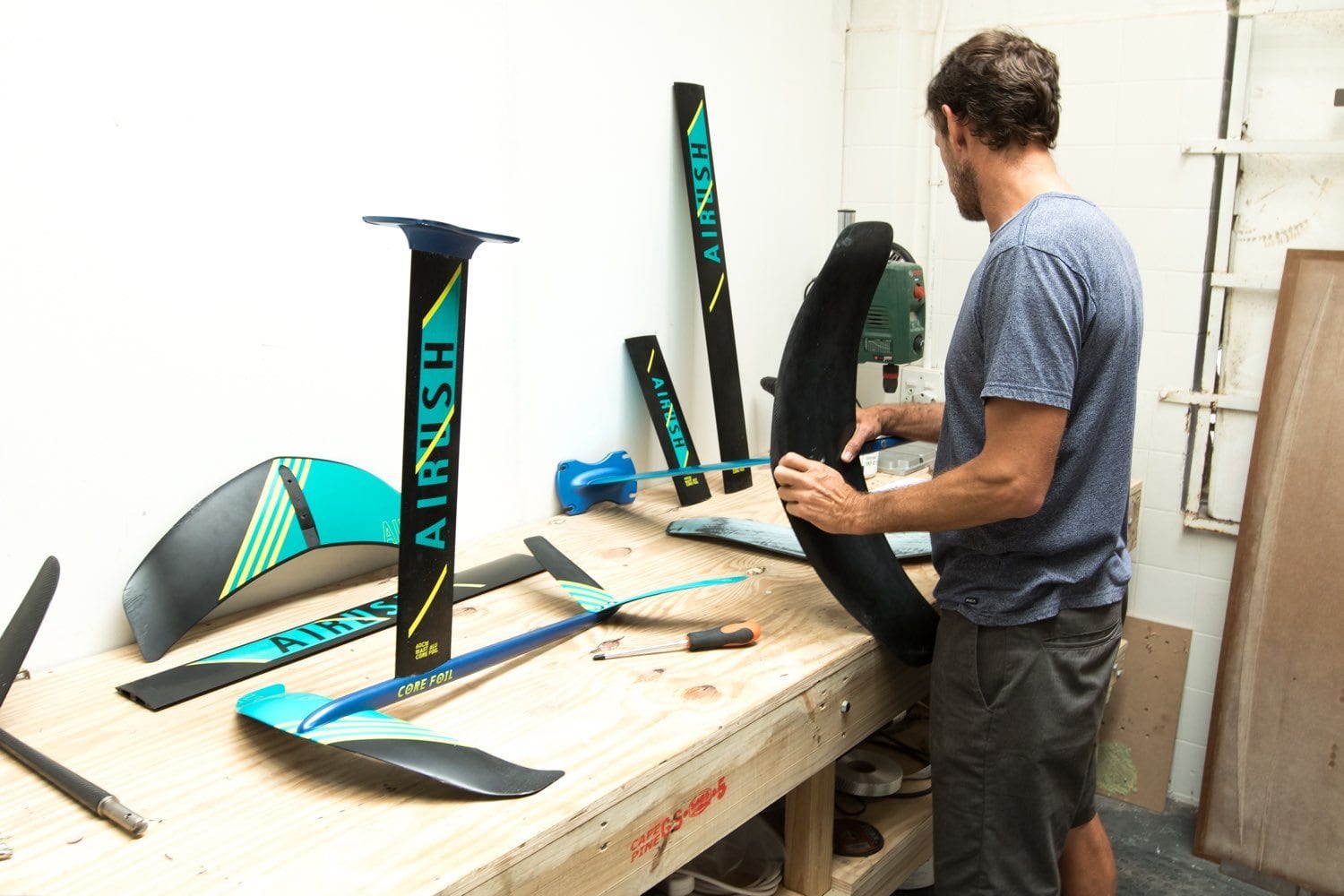 The fuselage looks more dynamic. How does this change the feeling of the foil while riding compared to a more squared fuselage?
The fuselage looks more dynamic. How does this change the feeling of the foil while riding compared to a more squared fuselage?
JK ”“ This new fuselage is amazing and one of the key focuses in our design. It has a lot less drag compared to a square fuselage as we commonly see in the industry. The difference is instantly noticeable and clear when you ride the two.
MVR ”“ The traditional square fuselage, that is widely used, was a result of using standard extruded sections. There is a definite disadvantage in drag with this fuselage shape. Our modular concept uses one fuselage shape for all options, thus we wanted to offer the low drag shape as a standard.
The feeling of the new fuselage is similar, but the clean flow from the fuselage over the wings is an added advantage.
CF ”“ I think the impact of a great fuselage is significant, besides the point mentioned, I feel that round fuselage shapes can create oscillations and make the foil feel unstable as the foil has a leeway angle and angle of attack that is often not considered.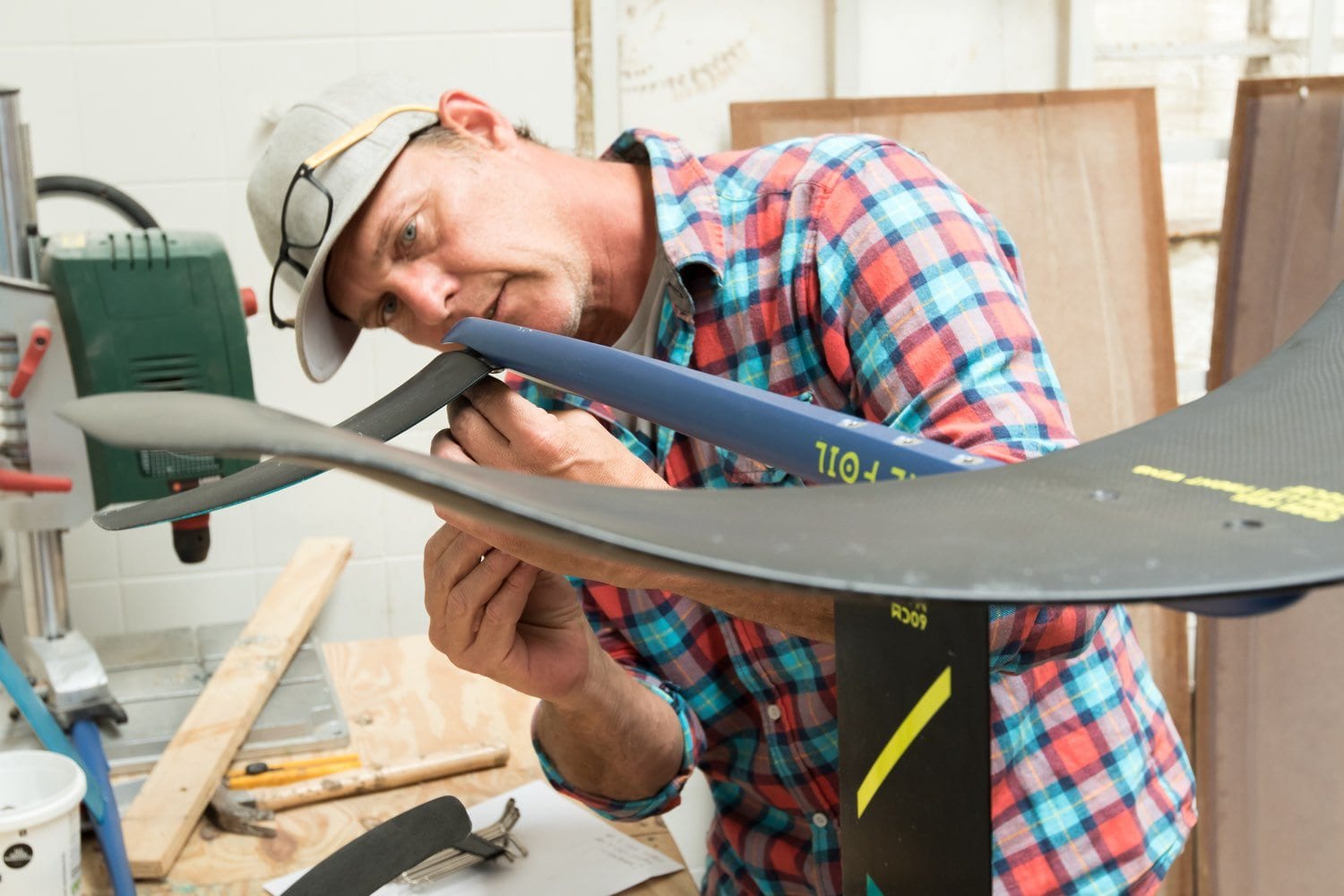
The rear trim option looks to be updated. Why the change in design and how does this help?
CF ”“ We simplified it for production by removing the V angle in the rear trim adjustment, this creates a more stable bond between the rear wing and fuselage. Fundamentally it is the same as last year.
MVR ”“ We have always had the tilting rear wing system on our setup. We have now increased the amount of angular adjustment possible. Not all foil users prefer the same amount of front foot pressure or the same amount of carving ability. You can have a different feel dialed-in, in a matter of seconds, without having to carry a pack of shimming material to the beach.
Where do you think the future of foil is taking us?
JK ”“ Foiling is going into all disciplines! At the beginning it was for lightwind riding, then competitors saw the potential of racing by pushing this discipline making it faster and more efficient compared to the widebody formula boards we used to compete on. Since this is quite challenging, many people are extremely excited about wave and carving capabilities. It’s more all-round, controllable, and fun. This makes foil riding a lot more accessible and diverse.
MVR ”“ Foils are everywhere now. The Americas Cup boats will even have foiling keel boats in the next season. Surfing, Windsurfing and SUP are all right there on the cusp too with foiling. The advantages are so big, but are still harder to tap into in some boardsports, due to the higher skill level required or the current development status.
The future of foiling looks exciting where foils will be easier to use and more efficient, with higher speed where required better low-end performance and more time on the water.
The new foil range looks to be predominantly freeride and carving? Why has this been the focus?
JK ”“ The majority of riders love to cruise. That is why the foil and board are more oriented on the freeride and carving side. With great foil stability, various masts height and low-speed performance with our different wings, freeride carving has never been easier or more fun.
MVR ”“ As mentioned before, the initial take-up of this technology by the racing crowd was logical and led to the original fast, but hard to use, race foils. This gave us all an accelerated technical growth into the performance side of the growing sport.
We can now use these known performance modules and apply them in different ways to suit the bigger part of the market. Cost and required skill level are more realistic in this market too, as most people look towards freeride as a focus.
Last year, the range utilized the tuttle box. What is the idea behind going towards a low profile plate system?
CF ”“ The plate allows more versatility in where you place the mast. For example, if you are using a larger wing and focusing more on carving, you tend to move the mast forward. If you are going faster towards freeride or racing you might want to move the mast back.
The plate and dual box system also allows our foils and boards to be used with other products in the industry, allowing for individual configuration.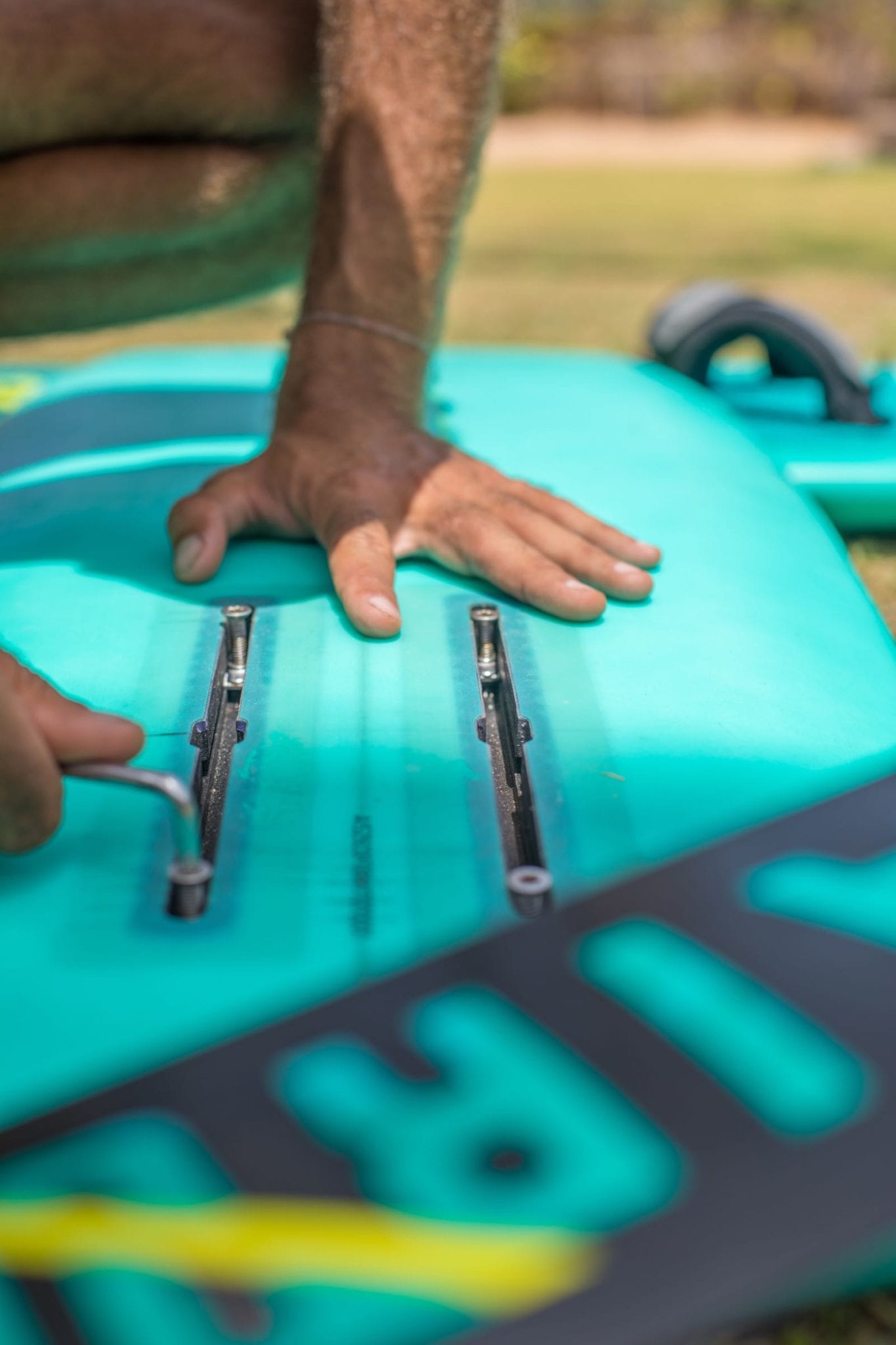
There is a large wing option. Who is the best suited for?
MVR ”“ The large wing, in combo with the shorter masts, is perfect for learning. Everything happens at a lower board speed. The crashes are less scary and the shorter masts allow for more flexibility with water depth.
Foil riders who prefer lower take-off speed and a more forgiving ride love this wing too. Variable conditions are easier to deal with, as well as access to locations with less water depth.
There seems to have been a lot of focus on the wing design. How many versions did you test?
MVR ”“ Since the V1 production, there have been many versions of the front wing and two versions of the rear wing.
We have changed foil shapes, aspect ratio, sweep, static twist and thickness. Anhedral has remained a design constant that has worked well for us so far on all versions of the front and rear wings.
What were the difficulties to becoming the first Ecoboard foilboard on the market?
CF We had been developing this technology in our surf program and brought it across to our Foilboard line. We had done most of our homework so it was within the foiling space, relatively easy.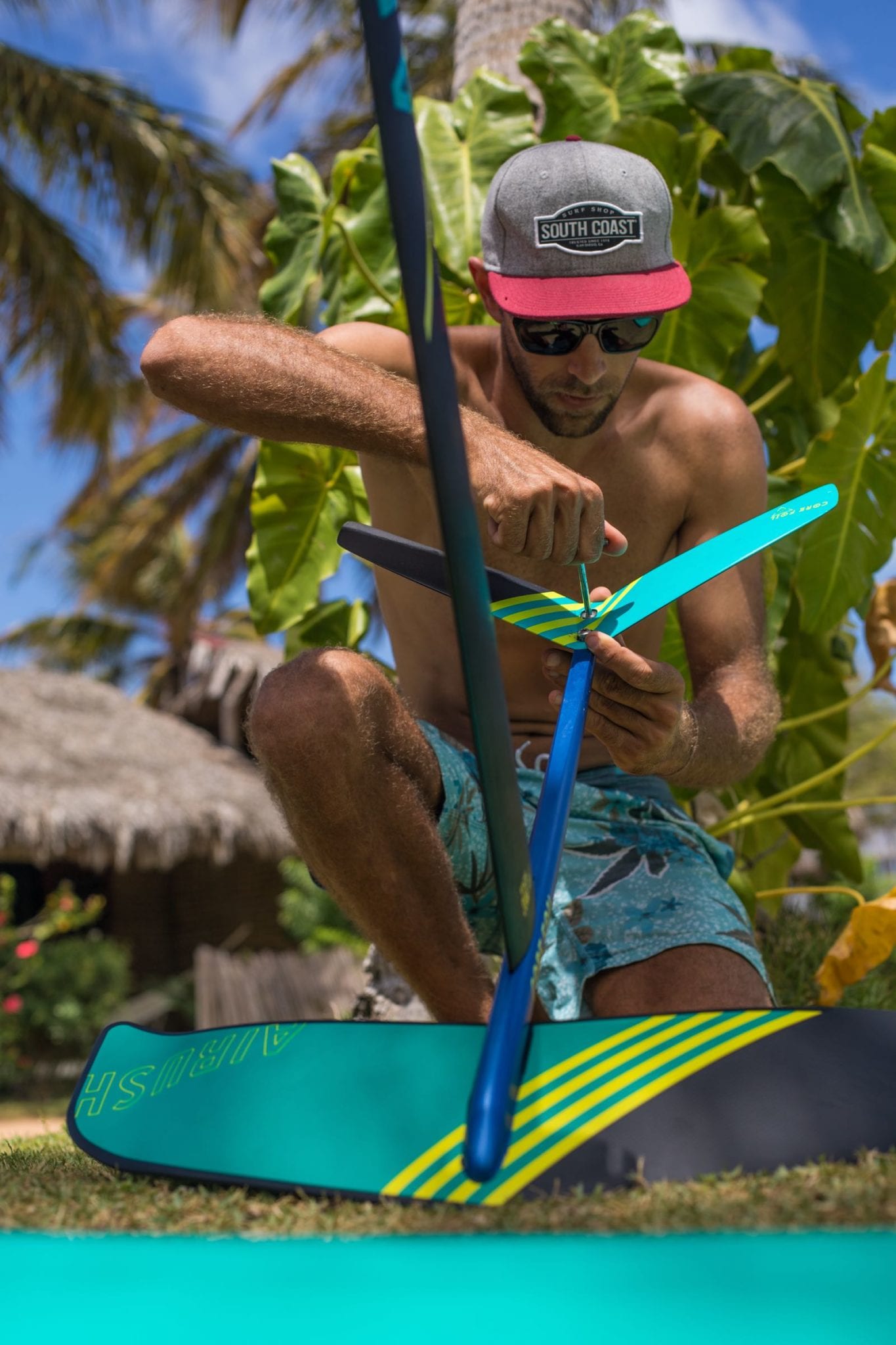
This post first appeared on the Airush blog. Read the entire article here: https://airush.com/behind-the-design-the-airush-foil-series/


